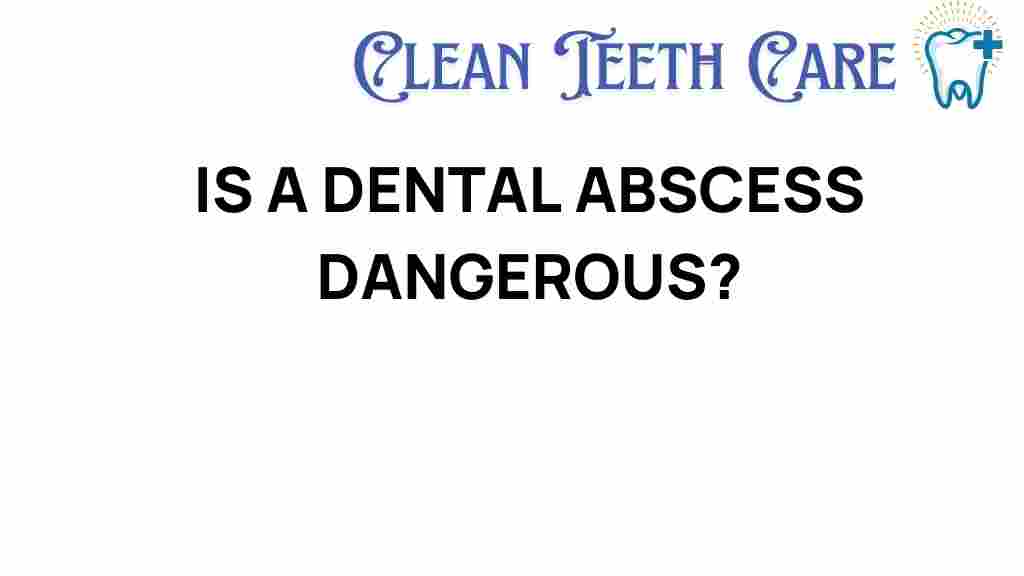The Hidden Dangers of a Dental Abscess: What You Need to Know
A dental abscess is a localized collection of pus that can form within the teeth, gums, or bone, resulting from an infection. This condition not only affects your oral health but can also lead to severe complications if left untreated. Understanding the symptoms, treatment options, and preventive measures for a dental abscess is crucial for maintaining your overall health. In this article, we will explore the hidden dangers of a dental abscess, the associated symptoms, treatment options, prevention strategies, and potential complications.
What is a Dental Abscess?
A dental abscess occurs when bacteria invade the pulp of the tooth, typically following untreated cavities or gum disease. The resulting infection leads to the formation of pus, which accumulates in the affected area. There are two primary types of dental abscesses:
- Periapical Abscess: This type occurs at the tip of the tooth root, often due to untreated decay.
- Periodontal Abscess: This type develops in the gums, usually associated with gum disease.
Symptoms of a Dental Abscess
Recognizing the symptoms of a dental abscess is vital for prompt treatment. Common symptoms include:
- Severe Pain: Intense, throbbing pain in the affected tooth or surrounding areas.
- Swelling: Swelling of the gums, face, or jaw.
- Redness: Redness and tenderness in the gums.
- Foul Taste: A bad taste in the mouth or bad breath due to the presence of pus.
- Fever: A low-grade fever as the body responds to the infection.
- Difficulty Swallowing: Pain or discomfort while swallowing.
Treatment Options for a Dental Abscess
Prompt treatment of a dental abscess is essential to alleviate pain and prevent complications. Treatment options may include:
1. Drainage of the Abscess
Your dentist will likely need to drain the pus from the abscess. This can be done through:
- Incision: Making a small cut in the gum to allow the pus to escape.
- Root Canal: If the infection is deep within the tooth, a root canal may be necessary to remove the infected pulp.
2. Antibiotics
In many cases, your dentist will prescribe antibiotics to fight the infection, especially if it has spread beyond the abscess.
3. Pain Management
Over-the-counter pain relievers, such as ibuprofen or acetaminophen, can help alleviate pain associated with a dental abscess.
4. Follow-Up Care
After the initial treatment, follow up with your dentist to ensure the infection is resolving and to discuss further dental care.
Preventing a Dental Abscess
Preventing a dental abscess is crucial for maintaining oral health. Here are some effective preventive strategies:
- Maintain Oral Hygiene: Brush your teeth at least twice a day and floss daily to remove plaque and food particles.
- Regular Dental Visits: Schedule routine check-ups with your dentist every six months for professional cleanings and examinations.
- Healthy Diet: Limit sugary foods and beverages that can contribute to tooth decay.
- Address Dental Issues: Treat cavities, gum disease, or other dental problems promptly to prevent infections.
Complications of Untreated Dental Abscesses
Failure to treat a dental abscess can lead to serious complications, including:
- Spread of Infection: The infection can spread to other parts of the body, including the jaw, neck, or even the brain.
- Tooth Loss: Severe infections can destroy the tooth structure, leading to the need for extraction.
- Osteomyelitis: A serious bone infection that can occur if the abscess spreads to the jawbone.
- Sepsis: A life-threatening condition where the body’s response to infection causes widespread inflammation.
When to See a Dentist
If you experience any symptoms of a dental abscess, such as severe pain, swelling, or fever, it is crucial to see your dentist as soon as possible. Early intervention can prevent further complications and ensure effective treatment.
Troubleshooting Tips for Managing Pain and Symptoms
While you wait for your dental appointment, you can manage pain and discomfort associated with a dental abscess by:
- Applying a Cold Compress: Use a cold compress on the outside of your cheek to reduce swelling and numb the pain.
- Rinsing with Salt Water: Rinse your mouth with warm salt water to help reduce swelling and clean the area.
- Avoiding Certain Foods: Steer clear of hot, cold, or sugary foods that can irritate the affected area.
Conclusion
A dental abscess is a serious condition that can lead to significant pain and complications if left untreated. Understanding the symptoms, treatment options, and preventive measures is essential for maintaining your oral health. If you suspect you have a dental abscess, do not hesitate to contact your dentist for a thorough examination and prompt treatment.
For more information on oral health and dental issues, visit this resource. And remember, maintaining regular dental visits and good oral hygiene practices are key to preventing dental abscesses and ensuring a healthy smile.
This article is in the category Conditions and created by CleanTeethCare Team
